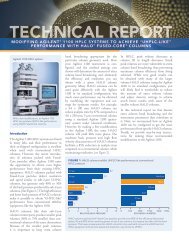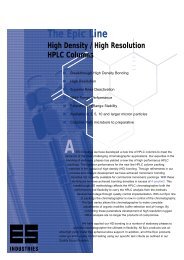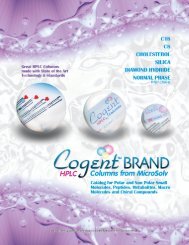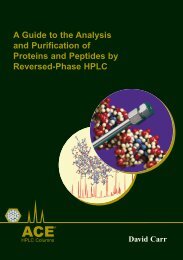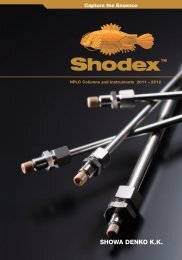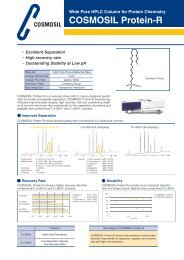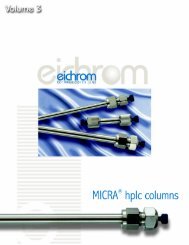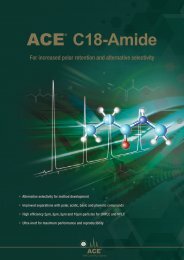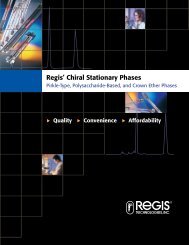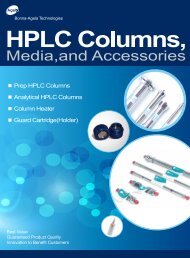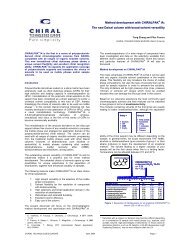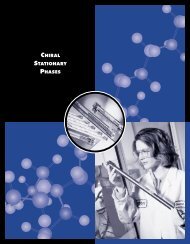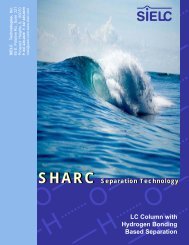A Guide to HPLC & LC-MS Buffer Selection - by John W ... - Hplc.eu
A Guide to HPLC & LC-MS Buffer Selection - by John W ... - Hplc.eu
A Guide to HPLC & LC-MS Buffer Selection - by John W ... - Hplc.eu
Create successful ePaper yourself
Turn your PDF publications into a flip-book with our unique Google optimized e-Paper software.
100% water is not an effective way <strong>to</strong> remove buffer – many stationary phases<br />
will undergo dewetting (sometimes called phase collapse) with 100% water,<br />
defeating the washing process. However “high aqueous” or “AQ” type phases can<br />
be flushed with 100% water without dewetting concerns.<br />
Summary<br />
• <strong>Buffer</strong>s are used in RP-<strong>HP<strong>LC</strong></strong> separations <strong>to</strong> control the retention of<br />
ionizable compounds. Usually we would like <strong>to</strong> suppress ionization of<br />
analytes in order <strong>to</strong> maximize sample retention. This means the mobile<br />
phase pH should (ideally) be at least 2 pH units below or above the sample<br />
pK a , for acids or bases, respectively.<br />
• For the most effective buffering, a buffer should be used within ±1 pH unit<br />
of the buffer’s pK a . These characteristics of the sample and buffer mean that<br />
the choice of buffer should be made carefully, using Tables 1 and 2 for<br />
guidance.<br />
• For <strong>LC</strong>-UV assays, phosphate and acetate buffers are most popular; the<br />
acetate-phosphate combination can cover the 2



